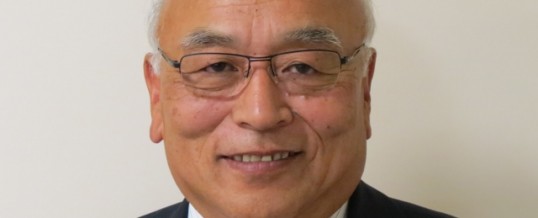
K. Ken Fujimoto
Due to the BCA National Council Meeting being held here in the beginning of March, this article may not seem timely, but I do need to get an early start. I have noticed that when I need to get an early start, I usually write about things that I knew or talked about in the past that I have come to see as having deeper or more meaning than I had originally thought.
Along those lines, I was thinking about the animals that are often depicted in our naijin. There are many birds and they are there as depicted in the sutras representing the beautiful and wondrous birds in the Pure Land that call out the sounds of the Buddha-dharma. However, when we consider the other animals depicted we have the lion, or lion-dog type creature and dragons. Though majestic, in one sense, the lion and dragon can also be considered frightening creatures.
The main depiction of the lion in the naijin area of most of our temples is the carving of the lion and peony found on the shumidan, the base of the altar where the statue or scroll of Amida or the scroll with the characters for Namo Amida Butsu can be seen. Most members have probably never seen or noticed it because there is usually a table in the way, preventing a clear view.
The significance of the lion and the peony is based in East Asian lore. The lion is considered the king of the animal kingdom and the peony is considered the king of the flower kingdom. The lion is strong and does not fear any other creature. However, it can be destroyed from within by worms that can form in its digestive tract and will eat at it and eventually kill it from within. To cure this, the lion seeks out the peony because parts of the plant have medicinal properties that will rid the lion of those worms.
This is a lesson for humans in that, we too need not fear that which is outside of ourselves, but can be destroyed from within. Like the lion who seeks out the peony, we are encouraged to seek out the Buddha-dharma that can cure that which can eat away at us from within.
Other places that the lion can be found is on the top of some of the incense burners and this is a symbol of the roar of the Buddha-dharma resounding throughout the world. Yet, another place is at the edge of the beams at the top of the naijin area that faces the seating areas. The Fresno Betsuin had these and they are considered to be guardians of the temple. They had a look that could be seen as either a snarl or a smile. Elementary school groups who came to visit would notice these right away and when I asked the students if the lions were smiling or growling, almost all of them saw the figures as smiling.
If a person enters the temple with good intentions, they will look like they are smiling at you. A person with bad intentions will see a snarl or growl. The same with the dragons. They can either be seen as smiling at you or ready to attack.
The workmanship to make these characters seem as if they are either smiling or snarling is remarkable, but the importance is that it shows us that our preconceptions or intentions can affect how we perceive things. How we feel about something influences what we see and how we see it. This is showing us an important aspect of the Eightfold Noble Path. Right View is not just what we see, but is influenced by what we think. The eight are not simply a progression, but are closely intertwined. We are not to do these in order, but we are to see how each one influences the others. What we see influences what we think. What we think influences what we see. What we see and/or think will affect how we express something. How we express or say something will affect how we perceive it and so on.
This is showing us that much of what is on our altars may seem like simple decoration, but they often have important lessons for us. We need to remember that in Buddhism, the altar is more a tool to teach us rather than an object of worship.
© February 16, 2017
FEB
